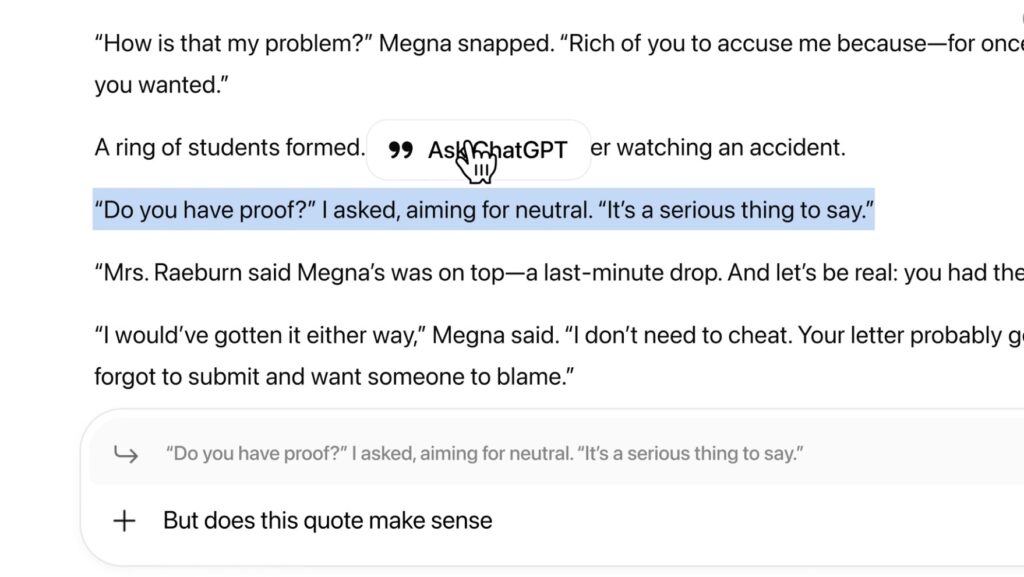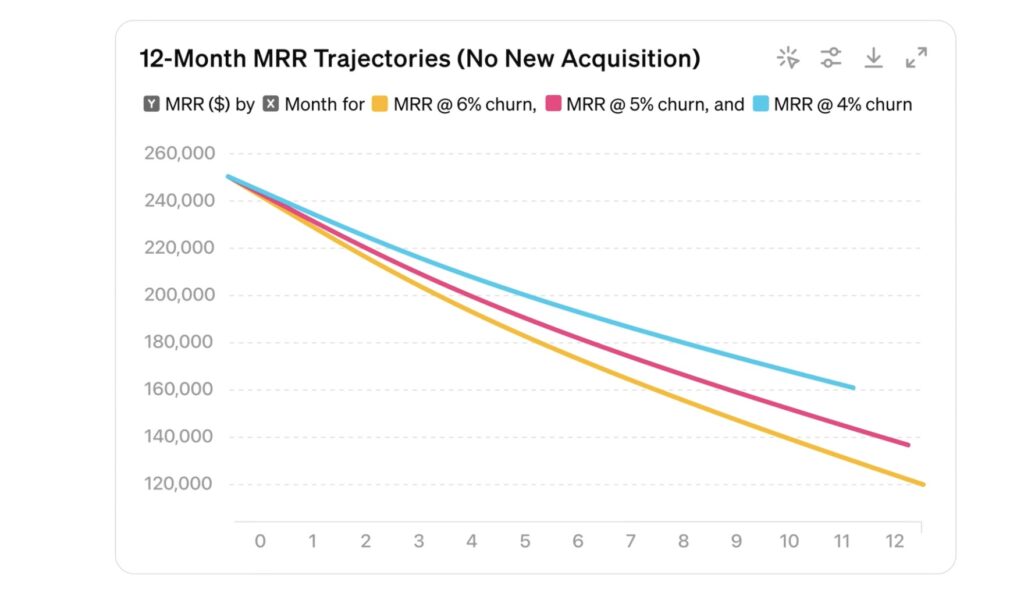The smartest, fastest model yet, blending rapid responses with expert reasoning to empower users in coding, health, writing, and beyond—while tackling persistent AI challenges like hallucinations.
- Unified Intelligence at Your Fingertips: GPT-5 combines a smart router with quick and deep reasoning models, making it a versatile tool that adapts to query complexity for more accurate, efficient responses across everyday and expert tasks.
- Breakthroughs in Key Domains: With superior performance in coding, creative writing, health advice, and multimodal understanding, GPT-5 reduces errors, enhances usefulness, and outperforms predecessors on benchmarks, all while being accessible to free and paid users.
- Broader Impacts and Innovations: Fueled by massive funding and integrations with Microsoft products, GPT-5 addresses hallucinations and safety concerns, positioning OpenAI at the forefront of AI evolution amid industry competition and data challenges.

OpenAI has once again pushed the boundaries of artificial intelligence with the launch of GPT-5, its most advanced language model to date. Described as the “smartest, fastest, most useful model yet,” GPT-5 builds on the successes of predecessors like GPT-4o by introducing built-in thinking capabilities that deliver expert-level intelligence to users worldwide. Available immediately to ChatGPT Free, Plus, Pro, and Team subscribers—with Enterprise and Education users gaining access in a week—this release comes amid OpenAI’s skyrocketing valuation, reportedly nearing $500 billion following a record-breaking $40 billion funding round in March. As competitors like Google and Anthropic intensify their efforts, GPT-5 stands out for its focus on real-world utility, reducing common AI pitfalls, and integrating seamlessly into daily life.
At the heart of GPT-5 is its unified system design, a game-changer that eliminates the need for users to manually switch between models. This setup includes a core efficient model for straightforward queries, a deeper reasoning component called GPT-5 thinking for complex problems, and a real-time router that intelligently decides which to deploy based on factors like conversation type, complexity, tool requirements, and even user prompts such as “think hard about this.” Trained on real-world signals—including user preferences, model switches, and accuracy metrics—the router improves over time, ensuring responses are both swift and precise. Even when usage limits are hit, mini versions of the models step in to maintain functionality. OpenAI hints at future plans to merge these into a single, even more streamlined model, promising an evolution toward truly seamless AI interaction.

One of GPT-5’s standout features is its enhanced usefulness across diverse domains, far surpassing previous models in benchmarks and practical applications. In coding, it’s OpenAI’s strongest performer yet, excelling at generating complex front-end interfaces, debugging large repositories, and creating aesthetically pleasing websites, apps, and games from a single prompt. Testers praise its intuitive grasp of design elements like spacing, typography, and white space, turning vague ideas into polished realities. For creative expression and writing, GPT-5 acts as a sophisticated collaborator, transforming rough concepts into compelling narratives with literary depth, rhythm, and structural finesse—whether sustaining unrhymed iambic pentameter or crafting free verse that flows naturally. This makes it invaluable for everyday tasks like drafting emails, reports, or memos, where it reliably handles ambiguity and delivers resonant, expressive results.
GPT-5 also shines in health-related queries, empowering users to better understand and advocate for their well-being without replacing professional medical advice. Scoring significantly higher on HealthBench—an evaluation based on realistic scenarios and physician criteria—it behaves like an active thought partner, proactively flagging concerns, asking clarifying questions, and tailoring responses to the user’s context, knowledge level, and geography. This leads to safer, more precise advice, such as interpreting test results or preparing questions for doctors. Examples highlight its edge: when prompted about understanding cancer risk or creating a pitcher rehab plan, GPT-5 provides detailed, helpful insights compared to GPT-4o’s more generic outputs. Similarly, in creative tasks like writing a wedding toast or planning a band’s global tour, it delivers richer, more detailed plans that feel personalized and actionable.
To illustrate GPT-5’s superiority, consider a poetry prompt about a widow in Kyoto finding her late husband’s socks in odd places. GPT-4o’s response is structured but predictable, with rhyme that tells rather than shows emotion. In contrast, GPT-5 crafts a poignant piece with vivid imagery and metaphors—like “black flags of a country that no longer exists” or “Kyoto’s bell rolls evening down the hill”—landing a stronger emotional arc and cultural resonance. These improvements extend to benchmarks: GPT-5 achieves 94.6% on AIME 2025 math problems, 74.9% on SWE-bench Verified coding, 84.2% on MMMU multimodal understanding, and 46.2% on HealthBench Hard. The Pro version’s extended reasoning even sets a new state-of-the-art at 88.4% on GPQA, demonstrating gains that translate to everyday reliability.
A critical advancement in GPT-5 is its handling of hallucinations, a persistent issue where AI generates incorrect or misleading information. Previous models like GPT-4o hallucinated 30%-50% of the time, often due to gaps in training data or complex prompts. OpenAI reports GPT-5 reduces factual errors by about 45% through better instruction following, reduced sycophancy (overly agreeable responses), and advanced training techniques. This makes it more trustworthy for real-world use, though researchers note fully eliminating hallucinations remains impossible—companies can only minimize them. GPT-5’s responses are quicker too, enhancing user experience without sacrificing depth.
Safety has also been prioritized, shifting from refusal-based training—where models simply comply or deny prompts—to “safe completions” that provide helpful answers within boundaries. For ambiguous or potentially harmful queries, GPT-5 transparently explains refusals and offers alternatives, handling edge cases like requests for illegal information more nuancedly. This approach ensures it’s effective against malicious intents while being flexible for benign uses, marking a step forward in ethical AI deployment.
Despite the hype, not all feedback is glowing. Reports from The Information suggest GPT-5’s improvements may not match the monumental leaps from GPT-3 to GPT-4, partly due to dwindling high-quality web data for training. This highlights broader industry challenges, as AI firms grapple with data scarcity amid rapid innovation. Still, GPT-5’s integration into Microsoft products—like Microsoft 365 Copilot, GitHub Copilot, and Azure AI Foundry—amplifies its reach, bolstering tools for consumers, businesses, and developers.
In the broader context, GPT-5 arrives as OpenAI’s user base explodes, with ChatGPT nearing 700 million weekly users—a fourfold increase since GPT-4o’s launch. Building on recent releases like ChatGPT Agent and Operator for task management, it reinforces OpenAI’s dominance in an AI arms race. Yet, it also underscores the need for responsible development, as models grow more capable. Whether aiding in poetry, health decisions, or code creation, GPT-5 democratizes expert intelligence, inviting users to explore its potential while reminding us that AI is a partner, not a replacement, in our increasingly digital world.
